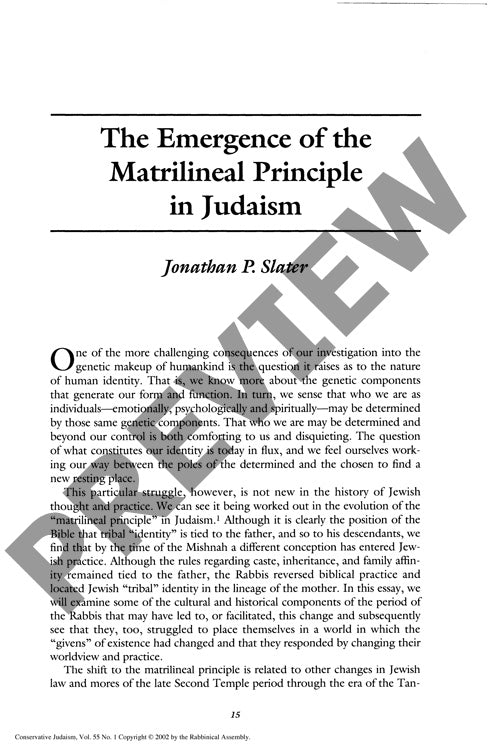The Emergence of the Matrilineal Princip
Couldn't load pickup availability
A radical shift in Jewish identity occurred during the late Second Temple period, as religious authorities redefined inheritance through the maternal rather than paternal line - a transformation that departed from biblical precedent. Textual analysis of Mishnaic and Talmudic sources reveals how this matrilineal principle emerged from two competing dynamics: the rabbis' struggle to balance physical procreation against Torah transmission in maintaining covenantal continuity, and growing tension between inherited versus achieved religious status. These changes unfolded amid post-Temple efforts to reconstitute Jewish life centered on the holiness of the Land of Israel. The rabbinic approach drew explicit parallels between agricultural laws of prohibited mixtures (kilayim) and lineage regulations, suggesting that just as seeds required holy land to achieve sanctification, Jewish identity required placement in the "holy womb" of a Jewish mother. Through metaphors comparing the fetus to both a pinkas (Torah tablet) and a nut containing sacred knowledge, the rabbis developed a new framework for Jewish identity that balanced biological inheritance with Torah knowledge and spiritual achievement. This matrilineal principle ultimately became foundational to rabbinic Judaism's broader redefinition of religious belonging and transmission.

More Information
-
Physical Description
-
Publication Information
Published 2002
ISBN
-
Publication Credits
Jonathan Slater

